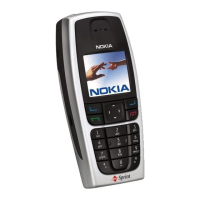Section 4A: Safety Guidelines 143
In 1996, the World Health Organization (WHO) established the International
EMF Project to review the scientific literature and work towards resolution of
health concerns over the use of RF technology. WHO maintains a Web site that
provides extensive information on this project and about RF biological effects
and research (www.who.ch/peh-emf).
FDA, EPA and other US government agencies responsible for public health and
safety have worked together and in connection with WHO to monitor
developments and identify research needs related to RF biological effects.
How does FCC Audit Cell Phone RF?
After FCC grants permission for a particular cellular telephone to be marketed,
FCC will occasionally conduct “post-grant” testing to determine whether
production versions of the phone are being produced to conform with FCC
regulatory requirements. The manufacturer of a cell phone that does not meet
FCC's regulatory requirements may be required to remove the cell phone from
use and to refund the purchase price or provide a replacement phone, and may
be subject to civil or criminal penalties. In addition, if the cell phone presents a
risk of injury to the user, FDA may also take regulatory action. The most
important post-grant test, from a consumer's perspective, is testing of the RF
emissions of the phone. FCC measures the Specific Absorption Rate (SAR) of
the phone, following a very rigorous testing protocol. As is true for nearly any
scientific measurement, there is a possibility that the test measurement may be
less than or greater than the actual RF emitted by the phone. This difference
between the RF test measurement and actual RF emission is because test
measurements are limited by instrument accuracy, because test measurement
and actual use environments are different, and other variable factors. This
inherent variability is known as “measurement uncertainty.” When FCC
conducts post-grant testing of a cell phone, FCC takes into account any
measurement uncertainty to when determining whether regulatory action is
appropriate. This approach ensures that when FCC takes regulatory action, it
will have a sound, defensible scientific basis.
FDA scientific staff reviewed the methodology used by FCC to measure cell
phone RF, and agreed it is an acceptable approach, given our current
understanding of the risks presented by cellular phone RF emissions. RF
emissions from cellular phones have not been shown to present a risk of injury
to the user when the measured SAR is less than the safety limits set by FCC (an
SAR of 1.6 w/kg). Even in a case where the maximum measurement
uncertainty permitted by current measurement standards was added to the
maximum permissible SAR, the resulting SAR value would be well below any
level known to produce an acute effect. Consequently, FCC's approach with
measurement uncertainty will not result in consumers being exposed to any
known risk from the RF emitted by cellular telephones.
FDA will continue to monitor studies and literature reports concerning acute
effects of cell phone RF, and concerning chronic effects of long-term exposure
to cellular telephone RF (that is, the risks from using a cell phone for many
years). If new information leads FDA to believe that a change to FCC's
measurement policy may be appropriate, FDA will contact FCC and both
agencies will work together to develop a mutually-acceptable approach.

